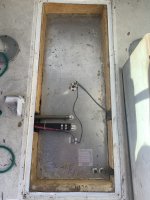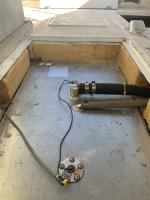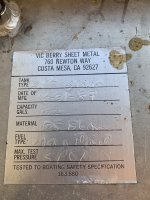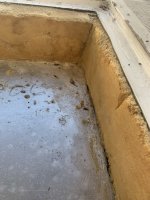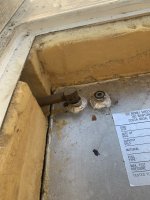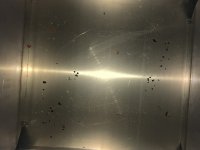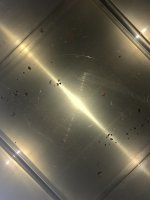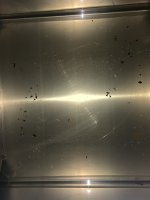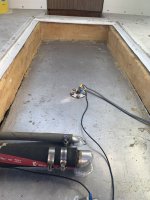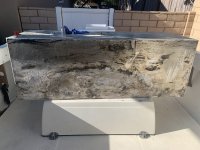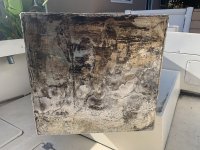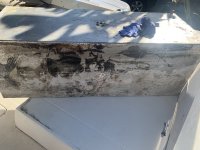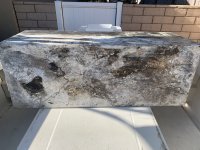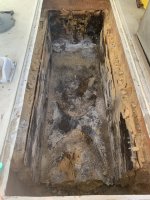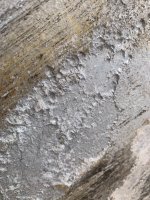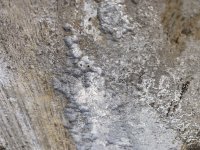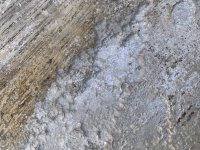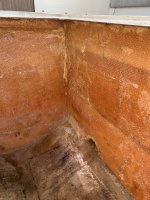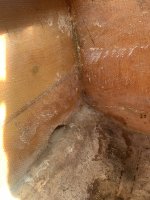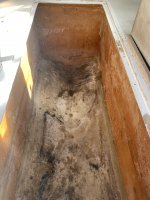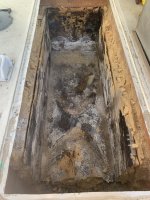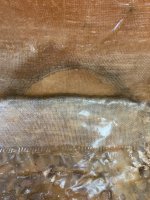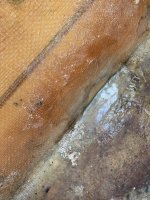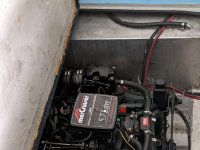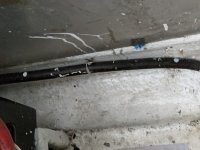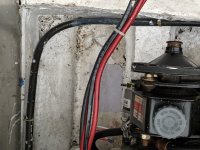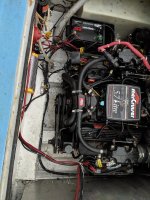I own a 24' Skipjack Fisherman that I purchased new in 1991. I have seen a few topics on old fuel tank failures and decided to take a closer look at mine after removing most of the fuel from the tank. The boat has always been trailered and resides in a low humidity environment. There is a fuel water separator filter installed on the boat that I replace every season. I also use a fuel additive regularly to break down any water that gets into the fuel. The first thing I noticed after removing the access panel to the tank is that it is foamed in which is not usually done any more. The tank was built by Berry's in Costa Mesa, CA. and it looks like it was a good installation. The sticker on the tank says it is 112 gallons. Surprisingly, the foam is rock hard and there is no sign of any water intrusion of fuel odor. I then removed the fuel level sending unit to get a better look inside the tank. Unfortunately, you cannot see all the way back to the fuel pickup tube due to the baffles inside the tank. But I was able to get a good look at most of the tank and get a few pics as well. There are some small pieces/debris that were probably introduced with the gas over the years but overall I thought the tank looks like it is in descent shape. I attached some photos and would like your opinions on what you would do if this was your boat? Does this tank have more life in its current condition or what are the next steps that I should consider? I appreciate all you input.
Thanks,
Peter
Thanks,
Peter




















